We have a Release Agreement online which gives us
permission to copy and distribute resources for educational
purposes only.
Native Civil
Rights Leader
By Pauline Duncan
©February 1, 1999 Sitka, Alaska
A "Children
Of The Alaska Tidelands" Publications
|

Photo "Totem Park" by Pauline Duncan
|
Elizabeth Pertrovich From Collection: Early
Prints
of Alaska
Photo No. PCA-3294 Alaska State Library
"A Recollection of Civil Rights Elixabeth Peratrovich" published by
Central
Council of Tlingit and haida Indian Tribes orf Alaska, Alaska Native
Brotherhood
Grand Camp and Alaska Native Sisterhood Grand Camp and Seaalaska
Any other use or reproductions of this books is forbidden without
consent
All Along The Sitka Bay
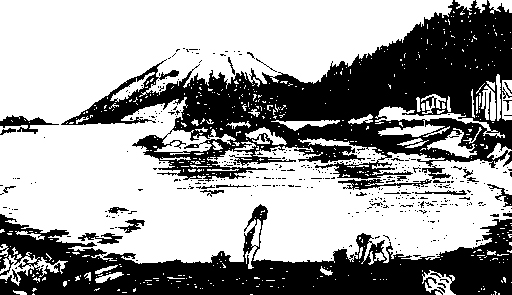
|
A long time ago Tlingit
children used to play all along the Sitka Bay.
The beach was their playground and treasure was everywhere to be found.
Tlingit legends and stories were told to children as they sat spellbound
with Tlingit music in the background.
Herring and salmon swam
and spawned as children gathered alder rounds.
Mothers and children gathered together to pick berries and tea.
While fathers and sons gathered from the sea.
There were no schools to be found, but elders were around.
The bear and deer walked
by the shrubs and calmly chewed on skunk
cabbage and devil's club.
Tlingit children did not eat candy and cake.
Subsistence food was all they could partake.
There were many trees
tall and short. The trees grew abundantly
all around from Sitka Bay to Hoonah Sound.
The Tlingit language and culture was shared throughout their land.
When it was forbidden they could not understand.
Smokehouses, camps, and
canoes lined the beach
as Tlingit children watched whales breach.
There were no streets or lights found in Sitka Bay
as children played yesterday.
A long time ago, Tlingit children used to play all along Sitka Bay.
Created
by Pauline Duncan © January 1996 * Art
by Jaqueline Decafongo Kookesh
Any other use or reproduction is forbidden without
prior consent.
|
Listen
to this poem in Tlingit
Alaska Native
Brotherhood Hall by Pauline Duncan

|
|
Martin Luther King
by Howard Sochurek/Life
|
Elizabeth
Peratrovich From Collection: Early Prints of Alaska
Photo No. PCA 01-3294 Alaska State Library
|
Martin Luther
King, Jr. and Elizabeth
Peratrovich were both civil rights leaders. Elizabeth
was 18 years old when Martin Luther King, Jr. was born
on January 15, 1929. Alaska Natives formed the
Alaska Native Brotherhood in 1912 to fight for equal
rights. Roy Peratrovich was the president of the Alaska
Native Brotherhood and Elizabeth was president of the
Alaska Native Sisterhood, when they led the efforts to
make discrimination of Alaska Natives illegal in the
State of Alaska.
Map of Alaska
From Graphic Art Collection of Creative Connections
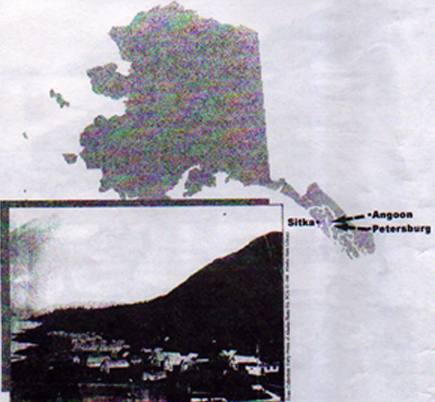
From Collection: early Prints of Alaska Photo No. PCA 01-496 Alaska State
Library
Elizabeth Peratrovich was born on July 4,
1911, in Petersburg, Alaska. She was raised by her adopted
parents, Andrew and Mary Wanamaker. The Wanamakers were
Presbyterian Church leaders living in Angoon, Alaska. Elizabeth
attended schools throughout Southeast Alaska and went on
to Western Washington College of Education in Bellingham,Washington.
She married Roy Peratrovich and they had three children,
Roy Jr., Loretta and Frank.
Photo by Vincent Soboleff, photographer
from Alaska State Library Photo No. PCA 1-246
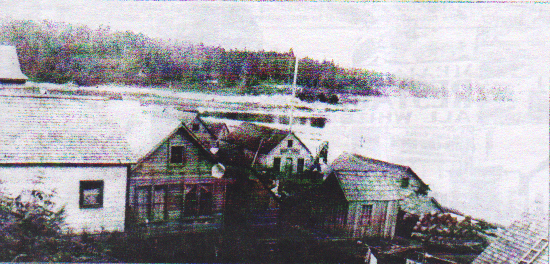
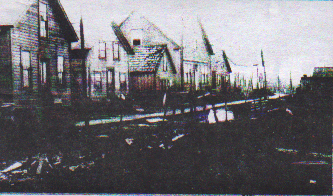
Photo from Merrill Collection Sheldon Jackson
College Stratton Library
When the United States purchased Alaska
from Russia in 1867, they promised that Native Alaskans
would have equal citizenship. It did not happen. Natives
were treated poorly. Natives were not allowed to go into
all stores, restaurants, hotels or schools. Elizabeth Peratrovich
began working on passage of a law that would make discrimination
against Natives illegal in Alaska.
Roy and Elizabeth moved to Juneau, and
were excited about buying a new home. They were told they
couldn't
buy the house they wanted because they were Native. They
were very sad and surprised to hear they could not live
in some neighborhoods. In Juneau they saw signs that said "No
Natives" on restaurants and hotels.
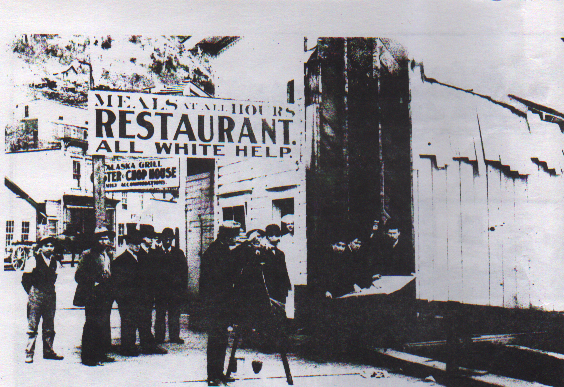
Photo from Winter and Pond Collection #PCA
87-1050 Alaska State Library
In Sitka, Native children went to separate
churches, sat in separate sections in the movie theater
and weren't allowed to attend public schools with non-Native
children.
In February 1945, the Alaska Senate
was preparing to vote on the Anti-Discrimination Act, which
would outlaw discrimination against Alaska Natives. Senator
Frank Whaley said, "I personally would prefer not to have
to sit next to these Natives in a theatre. Why, they smell
bad." Elizabeth Peratrovich spoke to the Senators about
the discrimination she and her family had faced in Juneau.
The Anti-Discrimination Act was passed 11 to 5.
Alaska Native children are able to attend
the same schools as other children and eat in the same
restaurants, because leaders like Elizabeth Peratrovich
fought for their rights. In 1988, the Alaska Legislature
established February 16 as "Elizabeth Peratrovich Day",
which is the anniversary of the signing of the Anti-Discrimination
Act.
Sent by Elizabeth
and Roy Peratrovich, to Ernest Gruening,
the Governor of Alaska in 1911. Printed with permission
from "A Recollection of Civil Rights Elizabeth Peratrovich" published
by Central Council of Tlingit and Haifa Indian Tribes
of Alaska, Alaska Native Brotherhood Grand Camp and Alaska
Native Sisterhood Grand Camp and Sealaska. Any other
use or reproductions of this book is forbidden without
consent.
|
ALASKA NATIVE BROTHERHOOD
ESTABLISHED 1913
December 30, 1941
Hon. Ernest Gruening
Governor of Alaska
Juneau, Alaska
Dear Mr. Gruening,
My attention has been called
to a business establishment in Douglas, namely, "Douglas Inn," which has a sign
on the door which reads, "No Natives Allowed."
In view or the present emergency, when unity is
being stressed don't you think that it is very Un-american?
We have always contended that wee are entitled to
every benefit that is accorded our so called White
Brothers. We pay the required taxes, taxes in one
instances that we feel are unjust, such as the School
tax. Our Native people pay this School tax each year
to educate the white children, yet they try to exclude
our children from these schools.
In the present emergency our Native boys are being
called upon to defend our beloved country, just as
the white boys. There is no distinction being made
there but yet when we patronized good business establishments
we are told in most cases that Natives are not allowed.
The proprietor of "Douglas Inn" do not seam to realize
that our Native boys are just as willing as the white
boys to lay down their lives to protect the freedom
that he enjoys. Instead he shows his appreciation
by having a No Natives Allowed" on his door.
We were shocked when the Jews
were discriminated against in Germany. Stores were
told of public places
having signs. No Jews Allowed." All Freedom loving
people in our country were horrified at these(texted
unmarked) yet it is being practiced in our country.
We as Indians consider this an outrage because we
are the real Natives of Alaska by reason our ancestors
who have guarded those (text unmarked) and woods
for years past. We will still be here to guard our
beloved country while herdes of uninterested whites
will be fleeing South.
When a Norwegian, Swede or an Irishman makes a feel
of himself in an of these business establishments
he is asked to leave and it is not held against all
of the Norwegians, Swedes or what have you. We (texted
unmarked) that we be accorded the same considerations.
If our people themselves respectfully be free to
(texted unmarked) and go.
We know that you have the interest of the Native
people at heart and we are asking that you use your
influence to eliminate this discrimination, not only
in Juneau or Douglas, but in the whole Territory.
Very truly yours,
Mrs. Elizabeth Peratrovich
Grand Vice Pres., A.N.S.
Roy Peratrovich
Grand Pres., A.N.S.
|
Petition from the Tlingit Orthodox
Chiefs to the U.S. President, 1867. Printed with permission
from "A Recollection of Civil Rights Elizabeth Peratrovich" published
by Central Council of Tlingit and Haida Indian Tribes of
Alaska, Alaska Native Brotherhood Grand Camp and Alaska
Native Sisterhood Grand Camp and Sealaska. Any other use
or reproductions of this book is forbidden without consent.
PETITION FROM THE TLINGIT ORTHODOX
CHIEFS TO
THE U.S. PRESIDENT, 1897
In part: The reason for this (petition) is following;
because here we cannot get any satisfaction to our
justand lawful demands. We know chat the Russian Government
at the time of the transfer of Alaska to the U.S. did
not sell us as slaves to America, but left us some
rights and privileges which were later made lawful
and firm by the U.S.
Congress. The Organic Act, providing a civil Government
for Alaska in section 8 provides that the Indians or
other persons in said district shall not be disturbed
in the possessionof any lands actually in their use
or occupation or not claimed by them. On the strength
of this law we always understood that every Indian
has a right to dispose of his own life and liberty
and his own property whether it consists in personal
possessions or real estate for instance: lands, forests,
lagoons, some small bay and rivers in which we could
procure for ourselves the necessary food and other
things for existence.
We always thought and surmised that the civil Government
sent from Washington would punish criminals equally
whether white or native, if a white man spills the
blood of an Indian or an Indian spills the blood of
a white man, the justice would mete out equal punishment.
But in reality this equality was never practiced. It
is true at the first four years of the protection of
the American Eagle remained m our minds clear and unsullied
cloud of the misunderstanding between a white man and
indian. In our minds eye there rise 28 souls of our
friends and relatives that innocently perished from
the hand of white men. Of course we always made complaints
to die U.S. Courts, and in Courts
every where received from the Authorities: only promises
and never satisfaction. Not a single white murderer...ever
received retaliation and now enjoys full liberty. With
all this we never lost faith in the Government at Washington.
This sorrowful reality only made us lose faith in persons
sent out here by the government.
...We offer our petition which is follows:
1) Not allow Mr. Brady (& Co.,
workers with the Presbyterian Mission) a right of
way through the centre
of (our) village along the narrow beach which
is situated between the water and our houses, where
we keep our boats, canoes, and other things. To forbid him
to destroy buildings and other property while building
this road. We do not offer pretensions to the land
chat he now possesses, which was from time immemorial
the property of our ancestors, and serves us as cemetery.
It is enough for him that he unlawfully took possession
of this land, and with the bones of some he banked
his ground and some he threw into' the water. We do
not 'wish to have such work going on, and do not wish
other white men to follow Mr. Brady's example.
2) We beg to have the superintendent of the
Baranoff Packing Co. forbidden to take way from us
our bays, streams and lagoons where we fished long
before white man came. We want him to do such fishing
as necessary for him with our consent. We demand that
he stop throwing bars and traps across the streams,
where by the fish cannot enter the lakes for the purpose
of spawning. His method of fishing in the last 8 years
in Redout, cross Sound, Hoonah, Whale Bay, Nib Bay,
Red Fish Bay, compels us to see very plainly that the
places mentioned are becoming empty.
Now the Tlingits are compelled to put up their fish
in distant places, which with the canoe is reached
only with great deal of hardship.
3) We do not want American saloons.
We beg the Government to close them... We have brought
cases to 'die local
authorities here and the result is that the white man
goes free and unpunished, but the Native suffers fines,
imprisonment and punishment. We do not want the civilization
that only does not stop saloons but encourages them…
We could go on without end to our petitions. we have
shown facts and beg the Government to allow us some
recognition. The answer to former petitions was never
received by the Indians perhaps through the fault of
the mediator, in the petition, and we beg the Government
to the answer to this to Khlantich, head of the Sitka
tribe.
|
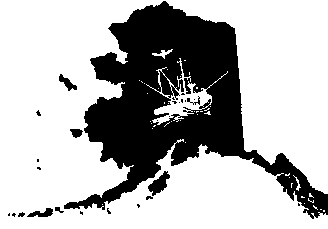 Historical
Happenings
Historical
Happenings
Back then....The
unofficial criteria for American citizenship was Christianity
as a religion a fluency in the English language. The bilingual,
Russian Orthodox grass-root Native inhabitants of Alaska
did not qualify nor were they compelled to join
a Protestant denomination that forbade the use of Tlingit
language and traditional
Tlingit customs. Natives were forced to petition the highest
in U.S. Authority and bring suit in federal court. However,
many businesses and schools were segregated and the powers
that be were not ready to change this.
A classic example in 1905 involved
an Aleut girl living in Sitka who wanted to attend the
white public school because of their music program. Her
father was an American named Jones and hers was a bilingual
Christian family. She asked the judge to declare her an
American citizen making her eligible to attend the Anglo-American
school. The judge denied this privilege because she was
not "sufficiently" civilized. She went to a fish camp every
summer with her Aleut grandmother to put up food. This
was considered uncivilized.
This was, however, inconsistent
with Judge James Wicker sham's 1904 decision in the case
of Minook, a Native at Fairbanks, that Minook was a U.S.
citizen by virtue of the third article of the treaty with
Russia, either as one of those inhabitants who accepted
the benefits of the proffered naturalization, or as a member
of an uncivilized Native tribe who has voluntarily taken
up his residence separate from any tribe of Indians and
has adopted the habits of civilized life.
Though 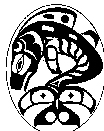 this
raised the hopes of Native Alaskans, whites in general
continued to disapprove of natives and disregard their
rights.
this
raised the hopes of Native Alaskans, whites in general
continued to disapprove of natives and disregard their
rights.
One Indian, claiming fishing
rights in a certain small bay which all other Indians had
recognized as belonging to him as it did his forefathers,
was rudely told by the white fishermen that the whites
now owned all the fishing privileges, and that he was not
a citizen and could no longer fish there. Flagrant abuses
of Native interests by unprincipled whites occurred all
too frequently.
Printed with permission from "A Recollection
of Civil Rights Elizabeth Peratrovich" published by Central
Council of Tiingit and Haida Indian Tribes of Alaska, Aiaska
Native Brotherhood Grand Camp and Alaska Native Sisterhood
Grand Camp and Sealaska. Any other use or reproductions
of this book is forbidden without consent.
|
Photo from Merrill Collection Sheldon
Jackson College Stratton Library
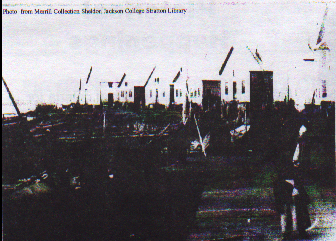
|
Photo from Vincent Soboloff Collection
PCA 1-23 Alaska State Library
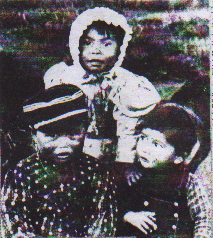
|
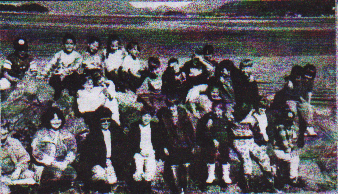
Pauline Duncan's Class
|
Important Dates
1802 Tlingits battle Russians in Sitka
1867 Alaska purchased from Russia
1911 Elizabeth was born July 4, in Petersburg,
Alaska
1912 Alaska became a territory and Alaska
Native Brotherhood formed
1915 Alaska Native Sisterhood formed
1924 U.S. Congress granted American
Citizenship to all Native Americans,
1927 Benny Benson, Alaskan Native, creates
Alaska flag
1931 Elizabeth married Roy Peratrovich
1940 Elizabeth moved to Juneau and encountered
discrimination against Natives.
1943 Elizabeth worked for passage of
the Anti-Discrimination Act, it was considered by the
Legislature and defeated.
1945 Elizabeth's testimony in the Senate
was important to passage of the Anti-Discrimination
Act. The Senate passed the bill 11 to 5 on
February 8, 1945
1958 Alaskans approved Statehood.
1958 Elizabeth died on December 1, 1958
1988 Alaska Legislative established
February 16, as Elizabeth Peratrovich Day.
|

|
Name________________ Date____________
|

|
Meet Elizabeth Peratrovich
|
|
|
|
Elizabeth was born
____________________________________
-----------------------------------------------------
____________________________________
|
|
|
|
Elizabeth went to school at
____________________________________
-----------------------------------------------------
____________________________________
|
|
|
____________________________________
-----------------------------------------------------
____________________________________
____________________________________
-----------------------------------------------------
____________________________________
|
|
You were born
____________________________________
-----------------------------------------------------
____________________________________
|
|
|
|
You go to school at
____________________________________
-----------------------------------------------------
____________________________________
|
|
|
____________________________________
-----------------------------------------------------
____________________________________
____________________________________
-----------------------------------------------------
____________________________________
|
Elizabeth did not like the
laws. She decided to change them. How did she bring change?
|
____________________________________
-----------------------------------------------------
____________________________________
|
____________________________________
-----------------------------------------------------
____________________________________
|
|
____________________________________
-----------------------------------------------------
____________________________________
|
____________________________________
-----------------------------------------------------
____________________________________
|
|
____________________________________
-----------------------------------------------------
____________________________________
|
____________________________________
-----------------------------------------------------
____________________________________
|
|
|
Elizabeth Peratrovich fun page continued...
|
|
|
The most important thing that Elizabeth
did was?
|
The most important thing you've
done is?
|
|
____________________________________
-----------------------------------------------------
____________________________________
|
____________________________________
-----------------------------------------------------
____________________________________
|
|
Elizabeth was happy when what happened?
|
What changes would make you happy?
|
|
____________________________________
-----------------------------------------------------
____________________________________
|
____________________________________
-----------------------------------------------------
____________________________________
|
|
____________________________________
-----------------------------------------------------
____________________________________
|
____________________________________
-----------------------------------------------------
____________________________________
|
|
____________________________________
-----------------------------------------------------
____________________________________
|
____________________________________
-----------------------------------------------------
____________________________________
|
Elizabeth was very brave to work to change
what?
|
____________________________________
-----------------------------------------------------
____________________________________
|
____________________________________
-----------------------------------------------------
____________________________________
|
|
____________________________________
-----------------------------------------------------
____________________________________
|
____________________________________
-----------------------------------------------------
____________________________________
|
|
____________________________________
-----------------------------------------------------
____________________________________
|
____________________________________
-----------------------------------------------------
____________________________________
|
Elizabeth went before the legislature to
do what?
|
____________________________________
-----------------------------------------------------
____________________________________
|
____________________________________
-----------------------------------------------------
____________________________________
|
|
____________________________________
-----------------------------------------------------
____________________________________
|
____________________________________
-----------------------------------------------------
____________________________________
|
|
____________________________________
-----------------------------------------------------
____________________________________
|
____________________________________
-----------------------------------------------------
____________________________________
|
Children of The Tidelands
Work Sheets
and Activity Pages
|
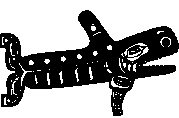
|
Bet you
didn't
know...
|
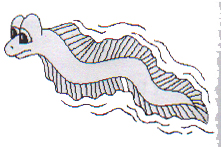
|
- Alaska sold to the U.S. for 7,200,000 in gold!
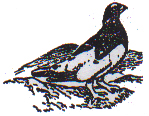
Willow Ptarmigan.
|
- Alaska is 585, 400sq.miles in size.
- Alaska state bird is the Willow Ptarmigan.
|
|
|
|
- Alaska
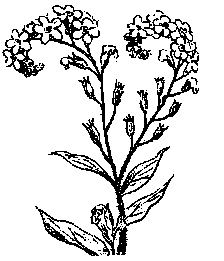 state
tree is the Sitka Spruce.
state
tree is the Sitka Spruce.
-
Alaska state flower is the foreget-me-not.
- Alaska state fish is the King Salmon.

- Alaska has 260 Federally recognized
tribes.

Click on image for a larger view
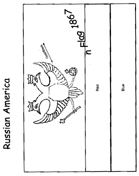
Clink on image for a larger view
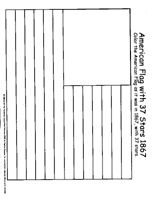
Pledge Allegiance To The Flag
I pledge allegiance to the flag
of the United States of America
And to the Republic for which it stands.
One nation under God,
Indivisible with liberty and justice for all.
|
Ayáa Kei Jixsitánch
Ayáa Ke'i Jixsitanch
Yáa haa aankwéiyi
Ka yáa aan keeni,
Ayís yanhas oowahán
Tléix' naa'
Dikée Aankáawu Teeyeex',
Ch'a woosh yáx
Kugaaxtoostee.
|
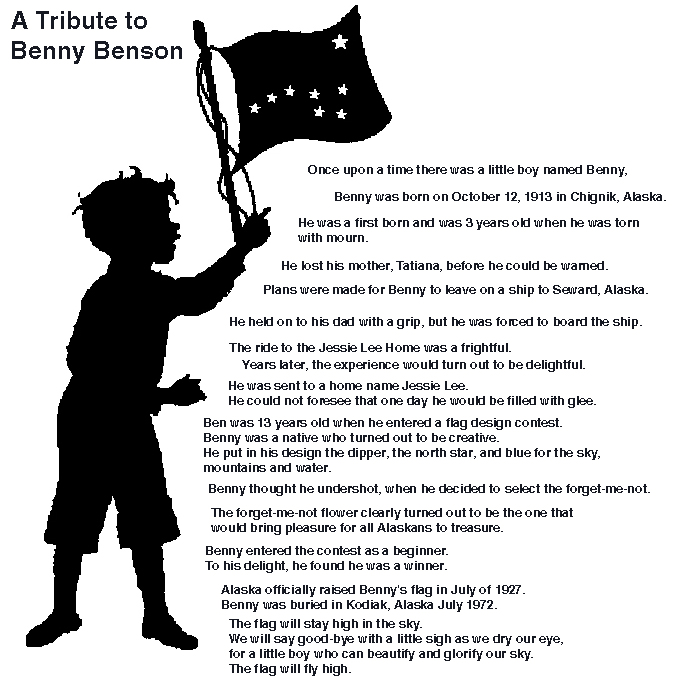
A Picture of Me!
|
|
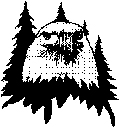
|

|
|
Name____________________________________
Date__________________
|

|
|

|

|
|

|
I live in the
state of_________________________
|

|
The capital city is ______________________________
Draw and color the state bird. Draw and color
the state flower.
Draw and color the state flag.
|

|
Name_________________________________ Date____________
|

|
Geography Activity Page
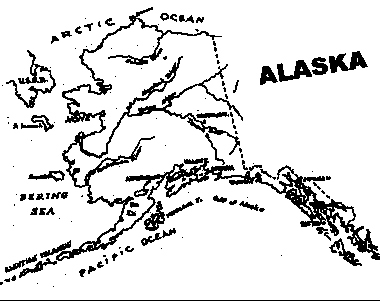
What is the 49th state?____________________________
Locate your community on the map. Put a star
by it.
What is it near?__________________is near_____________.
Name 2 rivers near your community.___________and ____________.
Name 2 oceans that border Alaska.________________
and _____________.
|
What is the state flower?
The state flower is the
___-___-____.
|

|
What is the state bird?
The state bird is the
_________
_________.
|

|
|

|
Name_________________________________ Date____________
|

|
Human Environment Interaction:List/Draw
in each box for your questions.
How many cultures lived in your community yesterday?________List
them.
How many cultures live in your community today?________List
them.
Population yesterday? Population today?
Was the population greater yesterday or today?________________
|
Draw a home of yesterday.
(no electricity, no tv, no refrigerator)
|
Draw a home of today. (refrigerator,
microwave, TV,VCR)
|
|
|
|
|

|
Name_________________________________ Date____________
|

|
Describe your community with a Cinquain outline.
_______________________________________
Name of your community
__________________________________________________________
Describe your community
__________________________________________________________
What is in your community that you are proud
of?
(Eagles, bears, herring)
____________________________________________________________
List four historical facts/places of your community
(Russian Church, Raptor Center, Totem poles)
____________________________________________________________
What was or is another name of your community.
(Shee-Atika)
***************************************************
Rewrite your poem on the next page and draw
picture to go with it.
|

|
Name_________________________________
Date____________
|

|
Rewrite your poem and draw a picture to go with
it.
|
|
|
---------------------------------------
|
|
---------------------------------------
|
|
---------------------------------------
|
|
---------------------------------------
|
|
---------------------------------------
|
|
---------------------------------------
|
|
---------------------------------------
|
|
---------------------------------------
|
|

|
Name____________________Date______
|

|
Movement Activity page:Draw
a pictures in each box for your questions.
What cultural and physical activities are offered
in your communities
How do you get around in your community?
What animals travel to your community?
How do you get your food, furniture, cars, boats,
and mail?
Movement Activity Page continued
Draw pictures in each box for your questions.
____________________________________________________________________________________
What type of transportation is offered in your community?
What kind of food can you gather locally?
List the name and draw one-each of the following geological formations in your
community?
|
Lake
|
Mountain
|
Island
|
Volcano
|
List four fin activities you can do in your community
|

|
Name_________________________________ Date____________
|

|
Community Occupations:
How have occupations in your community changed through the
years?
Occupations in my community;
Yesterday
|
Today
|
1.
|
6.
|
|
2.
|
7.
|
|
3.
|
8.
|
|
4.
|
9.
|
|
5.
|
10.
|
|
My community of __________now has; (How many? Draw one)
|
_Museum(s)
|
_Library(ies)
|
_Cannery(ies)
|
_Grocery(ies)
|
|
_Fire Hall(s)
|
_Drug Store(s)
|
_Restaurant(s)
|
_A.N.B Hall
|
|
_Hospital/Clinic(s)
|
_Boat Dock(s)
|
_Petrol Station(s)
|
_Other(s)
|
|
Things I like to do...

|
|
Things I like to think about...

|
|
Why my family love me

|
|
 My
favorite feelings.... My
favorite feelings....
|
Cultural Standards
Cultural Standards for students E-8-
8) Identify and appreciate who they are and their place in the world.
Cultural Standards for Educators A-6
6) Continually involve them in learning about the local culture.
Cultural Standards for Curriculum C-5
5) Treats local cultural knowledge as a means to acquire the conventional curriculum
content as outlined in state standards, as well as an end in itself.
Cultural Standards for Communities E-2
2) Encourages teachers to make use of facilities and expertise in the community
to demonstrate that education is a community-wide process involving everyone
as teachers.
Alaska State Standards
Geography
State Standards for students A-1 thru 3
1) Use maps and globes to locate places and regions;
2) Make maps, globes and graphs;
3) Understand how and why maps are changing documents.
State Standards for students B-1 thru 3
1) Know that places have distinctive geographic characteristics;
2) Analyze how places are formed, identified, named, and characterized;
3) Relate how people create similarities and differences among places.
State Standards for students D-1
1) Know that the need for people to exchange goods, services, and ideas creates
population centers cultural interaction, and transportation and communication
links.
State Standards for students F-I thru 6
1) Analyze and evaluate the impact of physical and human geographical factors
on major historical events;
2) Compare, contrast, and predict how places and regions change with time
3) Analyze resource management practices to assess their impact on future environmental
quality;
4) Interpret
demographic trends to project future changes and impacts on human environmental
systems;
5) Examine the impacts of global changes on human activity; and
6) Utilize geographic knowledge and skills to support interdisciplinary learning
and build competencies required of citizens.
Government and Citizenship
State Standards for students C-4
4) Understand
the importance of the historical and current roles of Alaska Native communities.
State Standards for students C-6
6) Understand the importance of the multicultural nature of the state.
State Standards for students G-5
5) Understand how jobs are created and their role in the economy.
History
State standards for students A-6
6) Know that cultural elements, including language, literature, the arts, customs,
and belief systems, reflect the ideas and attitudes of a specific time and
know how the cultural elements influence human interaction.
State Standards for students B-1 thru B-5
A student who meets the content standard should:
1) Comprehend the forces of change and continuity
that shape human history through the following persistent organizing themes:
a. the development of culture, the
emergence of civilizations, and the accomplishments and mistakes of social
organizations;
b. human communities and their relationships
with climate, subsistence base, resources, geography, and technology;
c. the origin and impact of ideologies,
religions, and institutions upon human societies;
d. the consequences of peace and violent
conflict to societies and their cultures;
e. major developments in societies as well
as changing patterns related to class, ethnicity, race, and gender;
2) Understand the people and the political, geographic,
economic, cultural, social, and environmental events that have shaped the
history of the state, the United States, and the world;
3) Recognize that historical understanding is
relevant and valuable in the student's life and for participating in local,
state, national, and global communities;
4) Recognize the importance of time, ideas, institutions,
people, places, cultures, and events in understanding large historical patterns;
and
5) Evaluate the influence of context upon historical
understanding.
Skills For A Healthy Life
State Standards for students B-2
2) Demonstrate an ability to make responsible decisions by discriminating among
risks and by identifying consequences.
State Standards for students C-1 thru 3
1) Resolve conflicts responsibly
2) Communicate effectively with in relationships
3) Evaluate how similarities and differences among individuals contribute to
relationships.
State Standards for students D2.
2) Take responsible actions to create safe and healthy environments.
6) Use various methods of communication to promote community well-being.
©Children Of The Tidelands,
Copywrited February 2001 by Pauline Duncan.
No reproduction allowed without prior consent.
If you work with children and would like to order
more
"Children of The Tidelands" booklets for your Class,
or learn of additional educational literature that is available;
write to: Pauline Duncan, 721 Lake Street, Sitka, AK 99835,
or call 1-907-747-6987
A Tribute to Elizabeth Peratrovich
1911-1958
When the United States purchase d
Alaska from Russia in 1867, d
Alaska from Russia in 1867,
they promised that Native Americans would have equal citizenship.
In Alaska, not so long ago, there was a young Tlingit lady named Elizabeth.
Elizabeth was born on July 4, 1911.
Elizabeth passed through womanhood.
when she was old enough, she joined the Alaska Native Sisterhood.
Elizabeth and her husband Roy, moved to Juneau where prejudice was everywhere.
One day, she wanted to buy a home.
She found out and could not believe
when she was asked to leave.
She and her husband Roy, were hurt and confused.
After listening to excuses of why they could not buy a home,
they refused to accept the news.
In Alaska, not so long ago, there were signs everywhere
that said "No
Natives, No Dogs, allowed,"
"Meals at all hours- all white help," "No Natives Allowed."
Elizabeth wanted to make everyone aware, these signs were certainly unfair.
She set out to prepare and declare these signs were not to be anywhere.
She and her husband Roy, would prepare to fight all the laws they thought
were unfair.
At first, she felt it strange to try to bring about change.
Elizabeth was 34 years old and Grand President of the Alaska Native Sisterhood
when she appeared to address the legislature on behalf of the Anti-discrimination
Act.
Senator Frank Whaley opposed the bill and said "I
would personally prefer not to have to sit next to these
Eskimos in a theater. Why, they smell bad!"
This statement made Elizabeth very sad!
Elizabeth went before the legislature to speak on behalf of the Anti-Discrimination
Act
When she spoke, she was powerful and listeners thought she was wonderful!
As she spoke, the senators sat spellbound. She spoke quietly and there
was not a sound.
When she was finished with her speech, she got a round of applause.
The Anti-Discrimination Act was passed 11-5 on February 16, 1945.
Today, we celebrate and salute Elizabeth Peratrovich Day on February
16.
Elizabeth, the first Alaskan native female civil rights activist, died
on December 1, 1958.
Historical Facts for the above poem were taken
from "Recollection of Civil Rights Leader Elizabeth Peratrovich" published
by Central Council of Tlingit & Haida Indian Tribes of
Alaska,
Alaska Native brotherhood Grand Camp & Alaska Native Sisterhood
Grand Camp. Sealaska Corporation. Created by Pauline Duncan. Sitka,
Alaska-August 1995
|